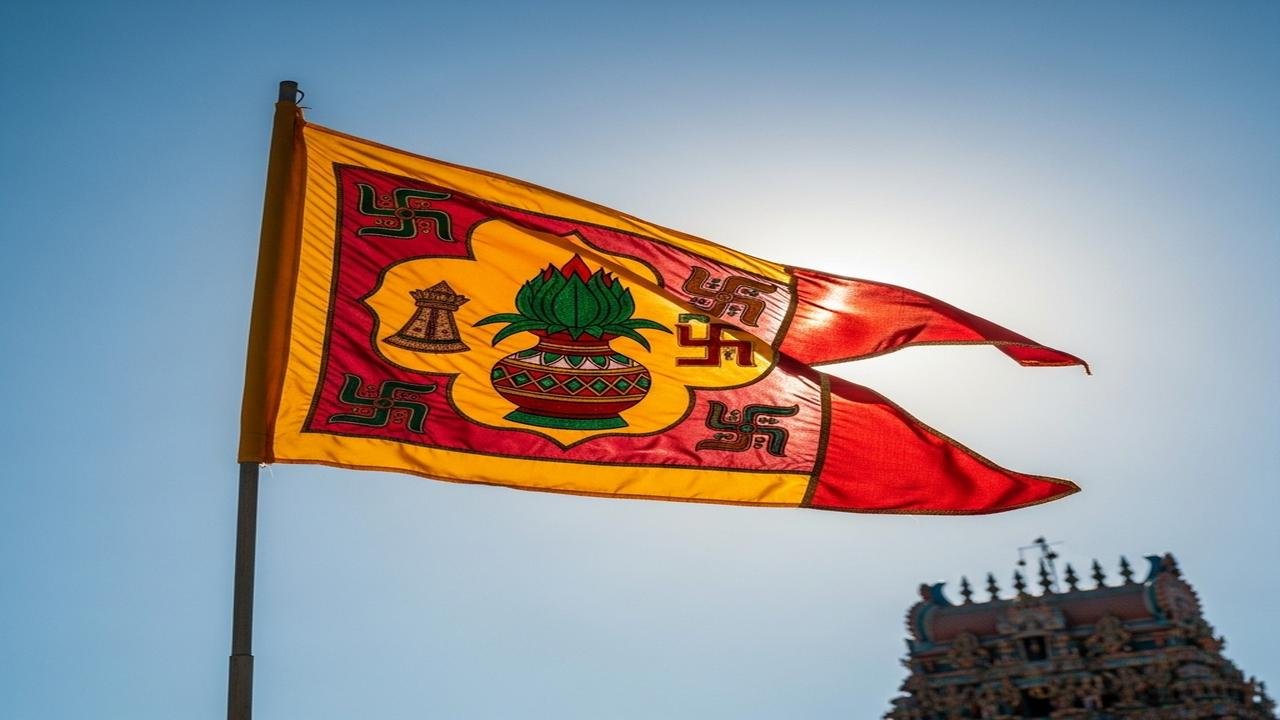Dhwaja Revealed, What Your Temple Flag Really Means

The Flag on Top: A Silent Song of the Temple
When I was a child, I used to walk with my grandmother to the small village temple. She would point to the colorful flag fluttering above the tower and say, “That little cloth tells everyone that God is awake here.” That simple image stayed with me. The flag atop a temple is more than decoration; it is a living sign that blends faith, history, and the heartbeats of a community.
The ancient name for this banner is the “dhwaja” or “dhvajastambha.” In temple architecture, a tall staff often stands near the temple entrance with a flag or metal emblem on top. This visible marker has roots in Vedic times and in stories passed down through generations. Kings and warriors once carried flags into battle as a sign of identity and courage. In the temple context, the flag declares a different victory—the victory of dharma, devotion, and the presence of the divine.
Look closely and you will see many layers of meaning woven into a single flag. It points upward, reminding us to lift our thoughts towards the divine. Its colors and symbols speak of the deity within: saffron for renunciation and sacrifice, red for energy and life, white for purity, and special emblems for forms of Shiva, Vishnu, or the Goddess. The flag becomes a language that both the village and the pilgrim can read without words.
There is also a ritual heartbeat to this practice. Flags are not left to weather away on their own. They are hoisted during festivals, changed on auspicious days, and offered by devotees as an act of service. The moment a new flag is tied and the ropes pulled tight, priests may chant mantras. The community often gathers to witness the act—children watching with wide eyes, elders touching the base with reverence. This simple ceremony knits people together, creating a living memory of devotion.
Many temples keep the flag as a signal: when it flies, the temple is open and the deity is worshipped inside. In coastal and hill temples, the flag also serves a practical purpose—visible from afar, it guides pilgrims and brings hope to those traveling long distances. In some famous shrines, the replacement of the flag becomes a daily ritual, a reminder of continuity across time.
There are local stories too. At some places, the flag is believed to carry the wishes of the devotees upward. At others, it is treated as a protective symbol that guards the village from harm. Craftspeople who make these flags often add personal touches—stitching in a small offering or tying a sacred thread—making each banner a humble, handcrafted prayer.
Modern life has not silenced this tradition. Temples now stand beside busy roads and tall buildings, yet their flags continue to speak. They connect a temple’s ancient purpose to the present: a place of refuge, a marker of identity, and a symbol of cultural continuity. Tourists may stop to take photographs, but devotees feel a deeper tug—an invitation to pause, to remember, to offer.
Here are a few ways the tradition lives on:
- Devotees donate flags as an act of gratitude or vow-fulfillment.
- Priests perform special rites while hoisting new banners.
- Communities gather for flag-changing ceremonies during festivals.
- Colors and symbols on flags reflect the temple’s deity and regional styles.
The temple flag is a gentle teacher. It shows us that faith is both visible and shared, that a simple cloth can carry memory, hope, and the courage to look upward.
Conclusion
When you next see a flag flying from a temple tower, pause for a moment. Let it remind you of the many hands that keep tradition alive, and of the quiet promise that the sacred is always present—beckoning us to lift our hearts.
